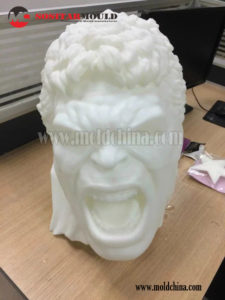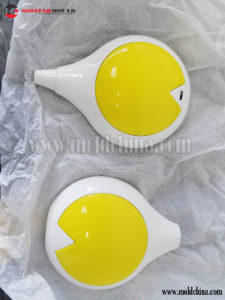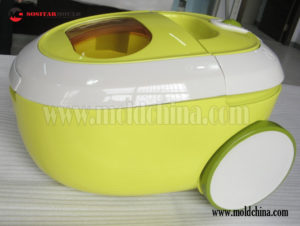
 A couple of years ago, the Chinese government announced the Made in China 2025 initiative, which would focus on upgrading the Chinese manufacturing industry over the coming decade with an emphasis on advanced technology. 3D printing has been a big part of the plan from the beginning, and it really shows, especially lately as more and more Chinese 3D printing companies arise and the technology becomes more visible in the fields of medicine, aerospace and more within the country.
A couple of years ago, the Chinese government announced the Made in China 2025 initiative, which would focus on upgrading the Chinese manufacturing industry over the coming decade with an emphasis on advanced technology. 3D printing has been a big part of the plan from the beginning, and it really shows, especially lately as more and more Chinese 3D printing companies arise and the technology becomes more visible in the fields of medicine, aerospace and more within the country.
As we’ve said many times before, 3D printing in manufacturing is arguably at its best when combined with other technologies, and Shenzhen-based Sositar Mould Co., Ltd. is taking a very well-rounded approach to advanced manufacturing. An injection molding company originally, Sositar Mould offers mold-making, CNC machining and 3D printing among its services. 3D printing is the newest technology the company has adopted, and we were able to speak to the company recently about its current use of 3D printing and its plans for the future.
“We provide one stop service for 3d print, mold making and injection molding,” Jackie Lau, Sositar Mould’s Director of Sales, tells 3DPrint.com. “We use 3d print to verify the design for customer, to save the modification cost of design change.”
Sositar Mould has only been using 3D printing since last year; prior to that, the company used CNC machining to create prototypes for customers. According to Lau, the Sositar Mould team is a firm believer in the idea that multiple manufacturing technologies are stronger together than they are on their own.
“It will be more effective and cost saving, for example: if customer [needs] just 3-5 parts, 3D print will be economical, but injection molding have more efficiency and lower cost if customer order 1000 pcs [or] more,” Lau continues. “Moreover, I believe plastic parts from injection molding is stronger than 3d print.”
Advanced materials and new 3D printing techniques are beginning to demonstrate the capability of producing parts that are as strong as injection-molded parts in some cases, however, and Sositar Mould does plan to expand its use of 3D printing in the future – for low volume production as well as prototyping.
Right now, Sositar uses an RSPro 450 SLA 3D printer from Chinese 3D printer manufacturer UnionTech, prototyping products mainly in clear and ABS-like resins. In addition to its 3D printing equipment, Sositar’s inventory includes:
- 21 milling machines
- 6 CNC machines
- 11 Charmilles EDM machines
- 10 grinding machines
- 4 lathes
- 7 wire cutting machines
- 10 injection machines
- A slow-feeding linear cutting machine
The company also utilizes a video measurement system for quality assurance. The factory is more than 3,800 square meters in size, and its equipment is capable of producing injection molded parts with sizes up to 8500 x 1000 x 8500 mm. More than 150 toolmakers are employed by Sositar Mould, and the company boasts 15 years of experience in injection molding. Its customers come from a wide range of industries, including automotive, home appliances, electronics, sporting equipment, medical devices, and other general OEM industrial applications.
A few notable clients include:
- Bosch
- Aston Martin
- Nissan
- Ford
- Philips
- Delphi
While Sositar Mould may be, at its heart, an injection molding company, it’s another example of a well-established company (it was founded in 1998) that has begun incorporating 3D printing into its more traditional manufacturing processes, and has found that the technology not only offers its own unique advantages but complements other manufacturing methods as well. The company is still new to 3D printing, but the technology has served it and its customers well. The company’s goal, Lau tells us, is to “provide the best solution for the customer who need plastic parts, with most economical way and highest efficiency and quality.” And that’s pretty well in line with the overall goal of Made in China 2025. Discuss in the Sositar Mould forum at 3DPB.com.
Subscribe to Our Email Newsletter
Stay up-to-date on all the latest news from the 3D printing industry and receive information and offers from third party vendors.
You May Also Like
3D Printing Financials: Fathom Struggles in Financial Quicksand During Critical Transition
Facing a year of key transitions and financial pressures, Fathom (Nasdaq: FTHM) has filed its annual report for 2023 with the U.S. Securities and Exchange Commission (SEC). The document outlines...
Latest Earnings Overview for Australian 3D Printing Firms Titomic and AML3D
Australian 3D printing manufacturing firms Titomic (ASX: TTT) and AML3D (ASX: AL3) reported their financial results for the period from July to December 2023, marking the first half of their...
3D Printing Webinar and Event Roundup: April 7, 2024
Webinars and events in the 3D printing industry are picking back up this week! Sea-Air-Space is coming to Maryland, and SAE International is sponsoring a 3D Systems webinar about 3D...
3D Printing Financials: Unpacking Farsoon and BLT’s 2023 Performance
In the Chinese 3D printing industry, two companies, Farsoon (SHA: 688433) and Bright Laser Technologies, or BLT (SHA: 688333), have recently unveiled their full-year earnings for 2023. Farsoon reported increases...




































